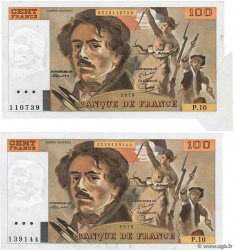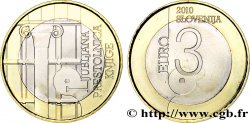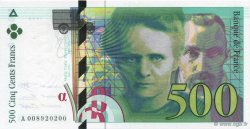le38 - The Elephant Chariot Period in the Coinage of Susa - Classical Numismatic Studies n°.16 KRITT Brian
65.00 €
Menge
In den Warenkorb

Autor : KRITT Brian
Verleger : CNG
Sprache : Anglais
Beschreibung : Lancaster 2024, relié sous jacquette (21 x 26 cm), 132 pages, 44 planches, illustrations en couleur
Gewicht : 650 g.
Kommentare
In recent years, there have been several studies of the Seleucus I coinages of Susa, but mostly focused on coins of the first half of the reign: the Trophy coins and Alexanders. Although a large number of new coins of those types have appeared since my publication of ESMS, very few new control varieties have been discovered, none for the Trophy tetradrachms. This book is the first major study since ESMS of the coins of the second half of the reign, what I call the Elephant Chariot Period. Besides the elephant chariot coins, this includes a number of related issues: Zeus / elephant staters, Artemis biga gold staters, Baal / lion staters, and others. Many new varieties of this period have now been identified, including ten new varieties with elephant types, and a new Baal / lion stater variety of Susa,the first since the time of Newell.
These varieties have important consequences for the relative and absolute chronologies of Susa in this period, as well as opening windows into its history: such as the first known transfer of a magistrate from Babylon to Susa, and the identification of SCB Mint A in Bactria as a likely colony of Susa. In addition, a new concept has been introduced here: the Susa Type/Variety cluster, a burst of exotic coin types in a short time interval. These can elucidate local events across mint lines. One such cluster from the time just before the Elephant Chariot Period, Cluster C, importantly, has shown the involvement of Antiochus I as new co-regent in reconfiguring the coinage of Susa at the time of the Persid Revolt. Another cluster (Cluster 2) has provided details into the foundation of the city and mint of Bactrian Mint A. In a related issue (Chapter 4), the analysis here uses chronologically identifiable elements at Susa and Aï Khanoum to provide the first internal chronology for Mint A. In Chapter 5, some new Bactrian coins appearing on the market have been discussed, and a new type of Sogdian imitations of Seleucid coins has been identified.
The extensive new, fully illustrated die studies of these coinages developed here provide a useful tool for identification and cataloging of the coinage issues of this very important period in Seleucid history at one of the most storied cities in Hellenistic antiquity.
In recent years, there have been several studies of the Seleucus I coinages of Susa, but mostly focused on coins of the first half of the reign: the Trophy coins and Alexanders. Although a large number of new coins of those types have appeared since my publication of ESMS, very few new control varieties have been discovered, none for the Trophy tetradrachms. This book is the first major study since ESMS of the coins of the second half of the reign, what I call the Elephant Chariot Period. Besides the elephant chariot coins, this includes a number of related issues: Zeus / elephant staters, Artemis biga gold staters, Baal / lion staters, and others. Many new varieties of this period have now been identified, including ten new varieties with elephant types, and a new Baal / lion stater variety of Susa, the first since the time of Newell.
These varieties have important consequences for the relative and absolute chronologies of Susa in this period, as well as opening windows into its history: such as the first known transfer of a magistrate from Babylon to Susa, and the identification of SCB Mint A in Bactria as a likely colony of Susa. In addition, a new concept has been introduced here: the Susa Type/Variety cluster, a burst of exotic coin types in a short time interval. These can elucidate local events across mint lines. One such cluster from the time just before the Elephant Chariot Period, Cluster C, importantly, has shown the involvement of Antiochus I as new co-regent in reconfiguring the coinage of Susa at the time of the Persid Revolt. Another cluster (Cluster 2) has provided details into the foundation of the city and mint of Bactrian Mint A. In a related issue (Chapter 4), the analysis here uses chronologically identifiable elements at Susa and Aï Khanoum to provide the first internal chronology for Mint A. In Chapter 5, some new Bactrian coins appearing on the market have been discussed, and a new type of Sogdian imitations of Seleucid coins has been identified.
The extensive new, fully illustrated die studies of these coinages developed here provide a useful tool for identification and cataloging of the coinage issues of this very important period in Seleucid history at one of the most storied cities in Hellenistic antiquity
These varieties have important consequences for the relative and absolute chronologies of Susa in this period, as well as opening windows into its history: such as the first known transfer of a magistrate from Babylon to Susa, and the identification of SCB Mint A in Bactria as a likely colony of Susa. In addition, a new concept has been introduced here: the Susa Type/Variety cluster, a burst of exotic coin types in a short time interval. These can elucidate local events across mint lines. One such cluster from the time just before the Elephant Chariot Period, Cluster C, importantly, has shown the involvement of Antiochus I as new co-regent in reconfiguring the coinage of Susa at the time of the Persid Revolt. Another cluster (Cluster 2) has provided details into the foundation of the city and mint of Bactrian Mint A. In a related issue (Chapter 4), the analysis here uses chronologically identifiable elements at Susa and Aï Khanoum to provide the first internal chronology for Mint A. In Chapter 5, some new Bactrian coins appearing on the market have been discussed, and a new type of Sogdian imitations of Seleucid coins has been identified.
The extensive new, fully illustrated die studies of these coinages developed here provide a useful tool for identification and cataloging of the coinage issues of this very important period in Seleucid history at one of the most storied cities in Hellenistic antiquity.
In recent years, there have been several studies of the Seleucus I coinages of Susa, but mostly focused on coins of the first half of the reign: the Trophy coins and Alexanders. Although a large number of new coins of those types have appeared since my publication of ESMS, very few new control varieties have been discovered, none for the Trophy tetradrachms. This book is the first major study since ESMS of the coins of the second half of the reign, what I call the Elephant Chariot Period. Besides the elephant chariot coins, this includes a number of related issues: Zeus / elephant staters, Artemis biga gold staters, Baal / lion staters, and others. Many new varieties of this period have now been identified, including ten new varieties with elephant types, and a new Baal / lion stater variety of Susa, the first since the time of Newell.
These varieties have important consequences for the relative and absolute chronologies of Susa in this period, as well as opening windows into its history: such as the first known transfer of a magistrate from Babylon to Susa, and the identification of SCB Mint A in Bactria as a likely colony of Susa. In addition, a new concept has been introduced here: the Susa Type/Variety cluster, a burst of exotic coin types in a short time interval. These can elucidate local events across mint lines. One such cluster from the time just before the Elephant Chariot Period, Cluster C, importantly, has shown the involvement of Antiochus I as new co-regent in reconfiguring the coinage of Susa at the time of the Persid Revolt. Another cluster (Cluster 2) has provided details into the foundation of the city and mint of Bactrian Mint A. In a related issue (Chapter 4), the analysis here uses chronologically identifiable elements at Susa and Aï Khanoum to provide the first internal chronology for Mint A. In Chapter 5, some new Bactrian coins appearing on the market have been discussed, and a new type of Sogdian imitations of Seleucid coins has been identified.
The extensive new, fully illustrated die studies of these coinages developed here provide a useful tool for identification and cataloging of the coinage issues of this very important period in Seleucid history at one of the most storied cities in Hellenistic antiquity








 Berichten über einen Fehler
Berichten über einen Fehler Die Seite drucken
Die Seite drucken Teilen meiner Auswahl
Teilen meiner Auswahl Stellen Sie eine Frage
Stellen Sie eine Frage










